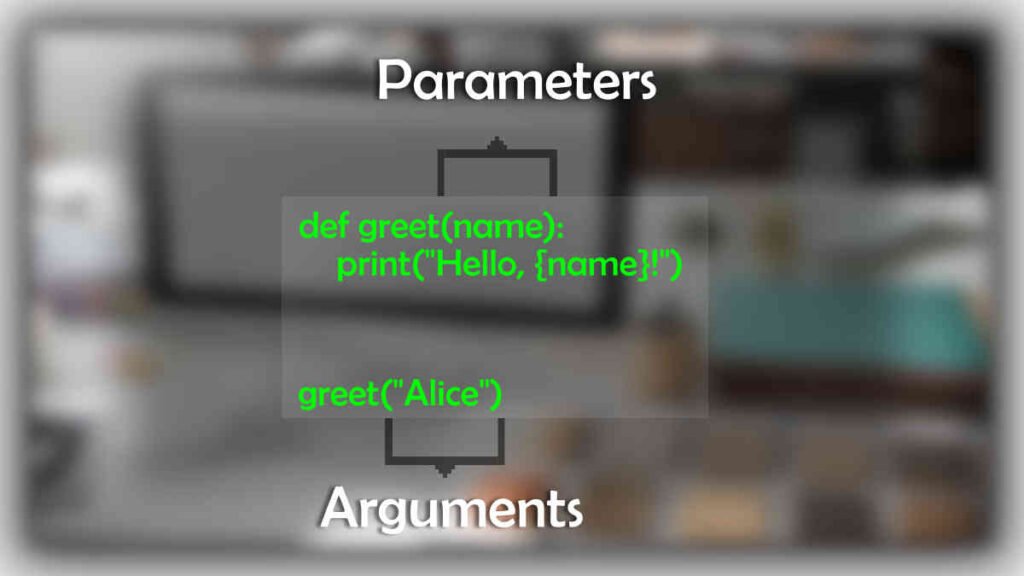Explore comprehensive insights on parameter in coding, including what is parameter, practical parameter in programming example, and the distinction between parameter and arguments.
Welcome back, visitor! In today’s post, we will cover everything you need to know about parameters (or params) in programming. This is an entry-level programming topic, particularly relevant when preparing for a technical interview. Stay with us to get answers to the following questions:
Join us to find the most commonly asked interview questions for programmers! We cover algorithms, design patterns, various sorting techniques, and almost all problem-solving questions that you might face in an interview.
FREE Offer: If you’re a new visitor preparing for an interview and need help, you can use the form on the right side to ask your question. It’s free and doesn’t require signing in. Alternatively, you can ask in our Quora space, which is also free, and you’ll receive a response within 24 hours. Go ahead and check it out! Don’t miss our top tips on Inheritance in OOPs: Ultimate Guide for Coding Interviews, best way to find duplicates in an array , reverse a linked list recursively and Function Overloading in C++. Your dream job is just a click away!
Table of Contents
What is a Parameter in Coding?
When you’re diving into the world of programming, you’ll often come across the term “parameter.” But what exactly is a param in coding? Simply put, a parameter is a variable used to pass information between functions or procedures. Think of it as a messenger that carries important data from one part of your code to another. It’s like giving a specific instruction to your friend: instead of just telling them to grab a coffee, you tell them to grab a “large, iced, vanilla latte.” That extra detail – “large, iced, vanilla” – is your parameter.
Parameters make your code more flexible and reusable. Instead of writing multiple functions to handle similar tasks with slight variations, you can write one function that takes different param. This not only saves time but also makes your code cleaner and easier to maintain.
How to Use Parameters in programming ?
Using params in coding is a breeze once you get the hang of it. Here’s a basic rundown of how you can use them in your programs.
When you define a function, you specify the parameters it expects. For instance, in Python, you might write a function that greets a user by their name
def greet(name):
print(f"website name, {name}!")Here, name is the parameter. To use this function, you call it with an argument – a value you want the parameter to take:
greet("interviewspreparation.com")In this example, “interviewspreparation.com” is the argument, which gets passed to the name param. The function then prints out “website name, interviewspreparation.com” You can see how this makes the function versatile. You can greet anyone by just changing the argument without altering the function itself.
Parameters with default values
param can also have default values. If a function parameter has a default value, you can call the function without providing an argument, and it will use the default. For example
def greet(name="Guest"):
print(f"Hello, {name}!")Calling greet() without any argument will now print “Hello, Guest!” This feature makes your functions even more flexible.
Examples of Parameters in Action
Let’s look at a few more examples to see how param work in different scenarios and programming languages.
Example 1: Summing Two Numbers (Python)
In this example, a and b are params of the add function. When you call add(5, 3), 5 and 3 are the arguments passed to these param.
def add(a, b):
return a + b
result = add(5, 3)
print(result) # Output: 8The Difference Between Parameters and Arguments
It’s easy to mix up parameters and arguments since they’re closely related, but they play different roles in coding. Let’s clear up the confusion.
Parameters are like placeholders in your function definition. They are the names you give to the information you want your function to receive. Think of parameters as the empty fields on a form that you’ll fill out later.
Arguments, on the other hand, are the actual values you pass to these placeholders when you call the function. Continuing with our form analogy, arguments are the specific answers you provide when you fill out the form.

To put it simply: param are what you expect, and arguments are what you get. In our greet function example, name is the param, while “interviewspreparation.com” is the argument.
Understanding this distinction is crucial for effective coding. It helps you write functions that are not only powerful but also adaptable to different situations.
Summarizing parameter in programming
So there you have it – a fun and easy-to-understand guide to param in coding! Whether you’re using parameters to customize greetings, calculate areas, or sum numbers, they’re an essential part of making your functions flexible and powerful. Remember, parameters are the placeholders you define, and arguments are the values you provide when calling the function. With this knowledge, you’re well on your way to writing cleaner, more efficient code. Happy coding!
